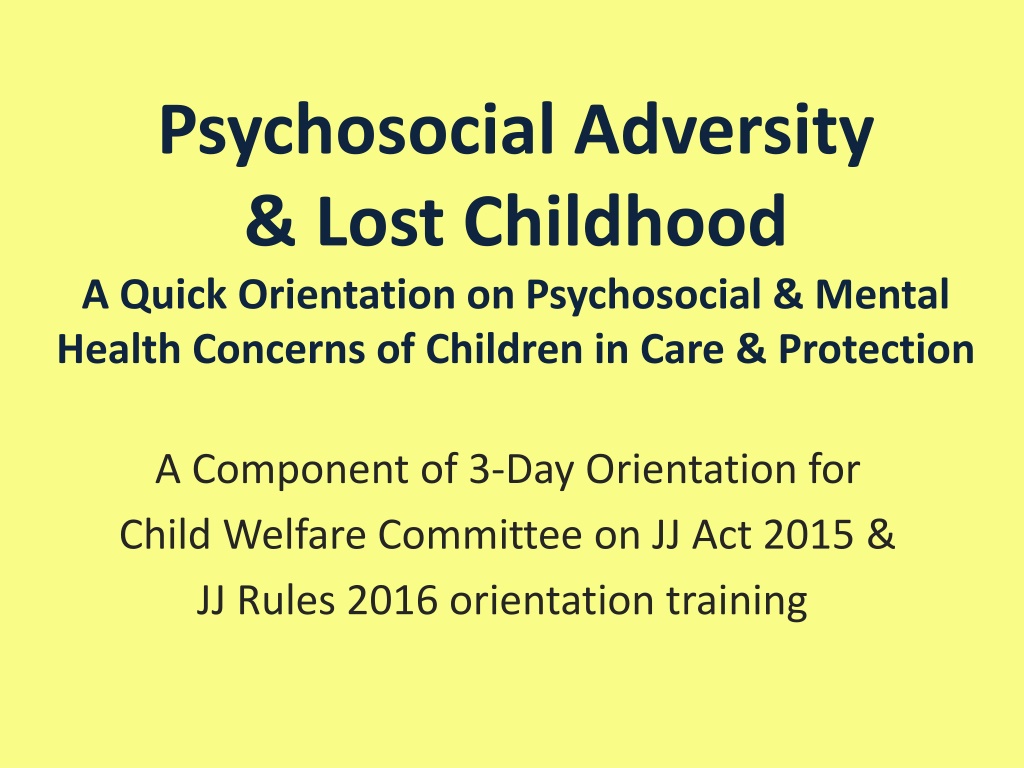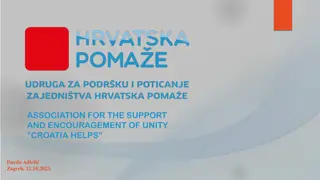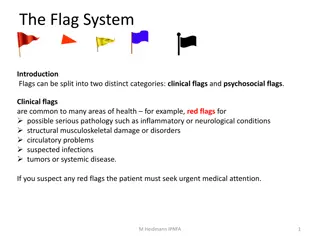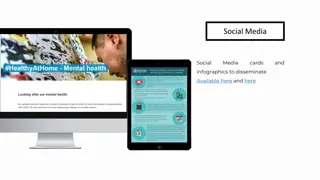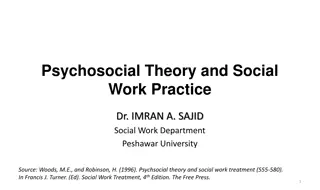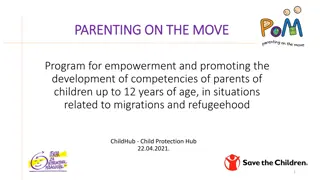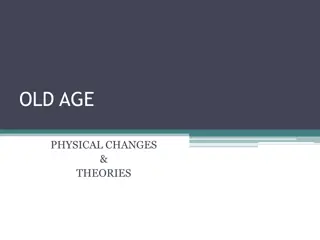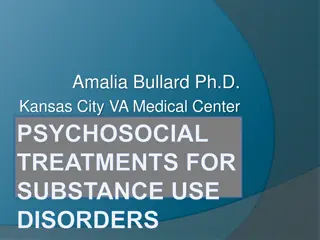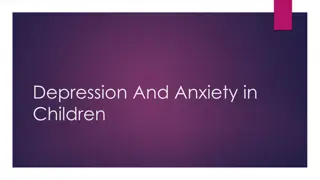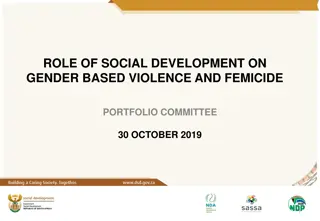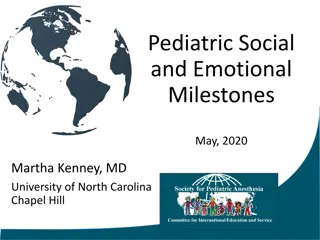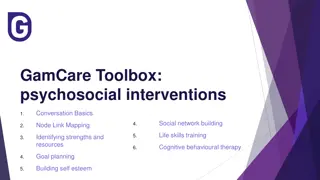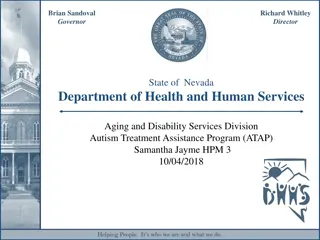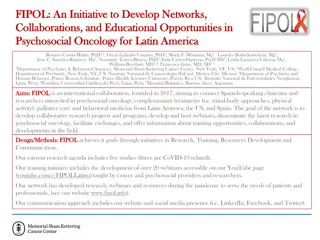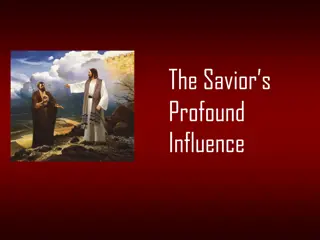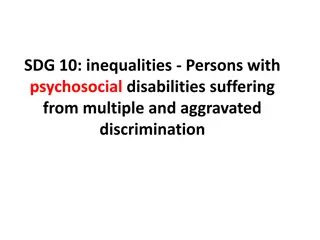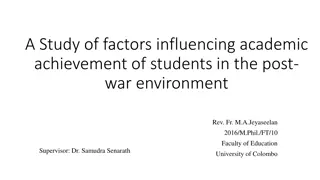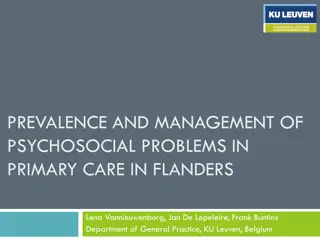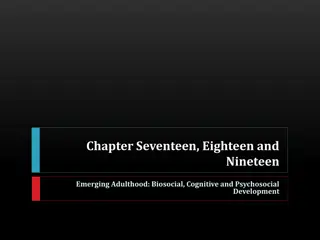Psychosocial Adversity in Children: A Comprehensive Overview
Exploring the deep-rooted issues of psychosocial adversity and lost childhood in children under care and protection, this orientation sheds light on the various challenges and dynamics involved. It delves into the profiling of children in difficult circumstances and highlights the different contexts, spaces, and experiences that contribute to these adversities. By examining processes and dynamics, the training aims to equip Child Welfare Committees with essential knowledge to address the mental health concerns of vulnerable children effectively.
Download Presentation

Please find below an Image/Link to download the presentation.
The content on the website is provided AS IS for your information and personal use only. It may not be sold, licensed, or shared on other websites without obtaining consent from the author.If you encounter any issues during the download, it is possible that the publisher has removed the file from their server.
You are allowed to download the files provided on this website for personal or commercial use, subject to the condition that they are used lawfully. All files are the property of their respective owners.
The content on the website is provided AS IS for your information and personal use only. It may not be sold, licensed, or shared on other websites without obtaining consent from the author.
E N D
Presentation Transcript
Psychosocial Adversity & Lost Childhood A Quick Orientation on Psychosocial & Mental Health Concerns of Children in Care & Protection A Component of 3-Day Orientation for Child Welfare Committee on JJ Act 2015 & JJ Rules 2016 orientation training
Contexts & Issues: What are the Processes and Dynamics involved in Psychosocial Adversity in Children?
Profiling Children in Difficult Circumstances: A Field Perspective Categories: i. Orphan & abandoned children ii. Street & working children iii. HIV infected/ affected children iv. Disabled children v. Children affected by gender & sexuality vulnerabilities (trafficking) vi. Children in conflict with the law vii. Children affected by disaster/armed conflict
Contexts: a) Institutionalized children Reside in child care agencies. Avail of care, protection and rehabilitation services. b) Non-institutionalized children Live within families and communities that expose them to multiple psychosocial risk factors such as physical/ sexual abuse, substance abuse, marital and family conflicts/violence; have social networks, but these are often severely compromised, placing them at times, at much higher risk of abuse and exploitation than institutional children; Often end up being placed in institutions.
Spaces: Communities (within families from low socio- economic strata) Observation Homes/Remand Homes/Transitional shelters/State and NGO Residential homes Bus-stands/Railway Stations, Streets, Raid- Rescue spaces (trafficking)
Experiences: Single parent families Rejection & abandonment Parental marital conflict Loss & Grief (Death of Parents and/or other Attachment Figures) Alcohol dependency in parents Parent with mental illness/ disability Physical, sexual and emotional abuse (violence). Child labour and trafficking Conflict with the law Political violence (ethnic cleansing/ genocide/ communal conflicts) Illness and disability
Developmental, Emotional & Behavioural Issues Internalizing Disorders: Anxiety (incl. dissociative disorders, bed-wetting) Adjustment Disorders/Dysphoria/ Depression Post-Traumatic Stress Disorder Externalizing Disorders: Runaway behaviour Self-harm Anger/ aggression Substance abuse Life Skills Issues Sex and sexuality issues Bullying (perpetration and victim) Developmental Disabilities Intellectual Disabilities Locomotor disabilities Sensory disabilities
Using a Child Development Framework to Understand Childhood & Age-Appropriate Needs of Children Development Needs & Opportunities Physical Development General growth and nutrition; Physical activities/ play/ exercise; Sensory experiences; Preparation for bodily changes/ education/ awareness Speech & Language Development Early stimulation for speech & language dev; Opportunities to describe, to be heard, to share experiences; Freedom to communicate needs/ articulate opinions and choices Social Development Opportunities for peer group play, forming friendships, Comfort/ security sense of belonging to peer group/ school/ family Affirmative sense of identity; Gender identity formation; Rules and healthy boundaries, along with opportunities to practice independent decision- making skills. Cognitive Development Early stimulation for learning; education; life skills on managing gender, sexuality, abuse, risk behaviours, conflict resolution Emotional Development Providing frequent and timely responses of love/ affection to child, incl. positive feed-back, verbal and non-verbal; opportunities to identify/ report about feelings; development of empathy; emotional regulation/ coping with difficult feelings; Life skills negotiation, assertiveness, stress & coping, problem solving; Resilient handling of role task, relational & emotional challenges; Happy, healthy, responsible sexual behaviour
The Basis of Vulnerable Childrens Mental Health Problems: Loss of Childhood 1. Attachment issues and Neglect (Acts of Omission) The families and home environments of these children are frequently fraught with marital problems, domestic violence, alcohol dependence Single-parenting, lack of time on the part of the parent to care for the child (usually due to financial problems and the need to work long hours outside the home). Lack of early stimulation opportunities/ activities for holistic child development. 2. The Trauma of Abuse(Acts of Commission) Early experiences of neglect, emotional, physical, sexual abuse. 3. The Trauma of Loss In later years, when the child comes to the institution, the attachment with the family (whatever the quality of attachment) is severed by physical separation, which may occur in various ways (such as rejection, abandonment, or relinquishment to an institution). 4. Difficulty Re-establishing Attachment Multiple changes in institution and changes in care givers due to staff turn-over within these institutions also contribute hugely to children s destabilizing experiences and do not allow them to easily find suitable (substitute) attachment figures as they move through life.
Consequence (1): Poor Emotional Regulationalso the underlying reason for many emotional & behaviour problems in vulnerable children Adverse early-life experiences have a profound effect on the developing brain. Neurobiological changes that occur in response to problematic early-life stress can lead to life-long psychiatric issues. Children do not develop appropriate emotional regulation mechanisms (the ability and skills to control anger, fear and sadness ) due to poor attachment/ unmet emotional needs. Mistrust and anxieties are exacerbated by the often difficult, sometimes violent and always unpredictable nature of the home environment and this worsens their abilities to control and manage difficult emotions. Later, when separated from the family/ institutionalized, the child s anger, resentment and sadness further exacerbate the already compromised emotional regulation mechanisms.
Consequence (2): Poor problem solving and conflict resolution skills also the underlying reason for conduct problems & high risk behaviours in vulnerable children Limited ability to process/analyze problems and generate alternatives/ ways of problem solving Distorted perception regarding events Antisocial values (poor role models at home). Emotional dysregulation Difficulty in decision-making and negotiation Learning difficulties & motivational problems Leading to high risk (sexual/ substance abuse & self-harm) behaviours
The trauma of loss & abuse is a cross-cutting theme but some are more equal than others HIV disclosure, adherence and mortality Children with disability: identity, personhood and rights Children in conflict with the law: social exclusion/ rejection and retribution versus restorative justice Children affected by disaster/ armed conflict: how much do we really know about them in India? infected/ affected children: Illness,
Responses to Children in Difficult Circumstances: Mind the Gap!
A. Helping children cope with the trauma of loss and abuse: Experiences from Children s Institutions Staff/Caregiver Attitudes We have provided you with everything and you still behave like this implies: children do not actually have the right to access survival needs; provision or rather the conferring of these rights are therefore conditional i.e. upon their good behaviour. children in institutions do not enjoy the same rights as those living with their families with regard to survival needs for, the latter are not obligated to express gratitude and behave well (at least not on a continuous basis) in order to avail of care and survival needs.
Staff/Caregiver Expectations Even if you have nobody else, we accept you, so you should be happy now. Expectation of gratitude children should be happy because they have (apparently) been removed from their homes/ hostile environments. children should hold the same view as the staff and therefore recognize what is good for them i.e. forget about a family that was largely problematic; children should wipe out the past and be unaffected by past experiences i.e. flip the memory switch in order to be able to forget; they should magically adjust in the new environment, because after all, it offers everything by way of survival needs and also offers better facilities than what they were accustomed to at home.
What caregivers/ CWC members need to do: Validation of children s difficult experiences and their feelings of fear, rejection, isolation, sadness as the case may be; Acknowledging past experiences which may not be forgotten, but if legitimized and discussed/ processed, children can learn to adopt a different, more helpful perspective on them (incl. emotional regulation); Understand that children s identities are defined by their families i.e. who they are is also about where they come from, so asking them to disregard their past/ problematic families and seamlessly adopt the culture and way of life in the institution is akin to asking them to disregard the roots of their identity this creates a dissonance in their minds about identity/ belonging. To attempt to understand the emotion behind the behaviour (and indeed the psychosocial events and experiences that lie behind the thoughts and emotions that then cause the behaviour) rather than merely/ superficially focussing on the problem behaviour; To develop depth work skills in helping children deal with trauma issues. To implement life skills training sessions that are not generic but context-specific (equipping children to deal with trauma/ adversity/conflict).
B. Working with Disabled Children: Observations from Disability Childcare Agencies Current Scenario: Little conceptual clarity regarding frameworks of disability services and interventions (poor understanding of child development frameworks). Mechanical implementation of activities, mainly for cognitive development. Emotional and behaviour problems associated with children with disability unaddressed. Largely disability-rehabilitation focussed approach adopted i.e. focussing on their disabilities and deficits particularly in relation to skills for activities for daily living through loco- motor and cognitive development activities. Over-protectiveness versus enablement and empowerment (resulting in high social anxiety/ poor social skills/ lack of exposure to the world/ poor life skill training).
Requisite Vision & Skills for Special Educators/ Caregivers : A rights-based approach --viewing the child as a person versus a set of disabilities. Therefore, addressing issues of identity and personhood are critical to child disability work. Use life skills approaches to children with disability, enabling these children to also evolve as social and emotional beings with self-esteem and self-confidence predicated on a strong concept of self-identity rather than isolated aspects of personality .
C. Meeting the Psychosocial Needs of HIV Infected Children: What we Know from Shelters and ART Centres Illness/ Disclosure/ Adherence not integrated into larger child psychosocial care/ counselling processes no systematic methods to work with children on these issues. Disclosure is not necessary: We do not need to tell the child because we want the child to be happy and we do not want to scare or alarm the child. Children will lose hope. Next week you will be alright if you take medicines. Children know that they have HIV. They know because they observe and see what is happening around them . Older children tell younger children about it. We leave the disclosure issues to [hospitals providing ART care]. [At ART centres], we are primarily concerned with: is the child taking the medicine or not? Then we just counsel the child to take the medicine correctly we do not observe the child or find out other psychological problems that the child may have.
What Caregivers/ Staff Need to Know & Do: Build an understanding in agency staff/ families that HIV care is not just about providing basic needs and that institutional/family care for HIV infected/ affected children involves larger mental health issues. An understanding of child development and how HIV impacts children s neurodevelopment; consequently, in addition to ART and nutrition, develop knowledge and skills to be able to maintain children s developmental trajectories. (esp. early stimulation for HIV infected/ affected young children) Skills for identification of emotional and behavioural issues and the nature of their relationship to the child s HIV illness and address illness/ disclosure and adherence issues keeping in mind the larger family/ illness realities of the child vs. a one-point/ isolated agenda. Enable children to cope with loss, grief and mortality issues.
D. Supporting Children in Conflict with the Law: The Juvenile Justice Dilemma Understanding children s narratives and the pathways to criminality. Retributive versus restorative/ justice. Gravity of the crime versus gravity of the circumstances. Therapeutic processes and methods to work towards reformation (staff orientation and skill building on life skills). Re-integration into civil society reformative
Last Thoughts: Linking Childhood Adversity & Psychosocial Healthcare
Framework for Analysis & Response to Childhood Adversity & Psychosocial Needs Context: Home/ School/ Family/ Public Space/ Social Spaces Basis of Understanding Child/ Basis of Counsellor s Response & Intervention Impact on Child: Emotions/ Behaviours Child s Experience: Happy/Difficult/ Traumatic (Loss/ Abuse) Child s Internalization (Inner Voice/ Thoughts)
Levels of Psychosocial Response and Interventions - In-depth individual work - Referral - Therapeutic groups/ Life Skills Training COUNSELING & THERAPY DEVELOPMENTAL NEEDS - First level response - Recreational Groups - Back to School NORMALIZATION - Providing food, shelter, water/sanitation, healthcare, physical safety. - Physical presence & reassurance. BASIC NEEDS & SOLIDARITY 24
Criteria for Referral to Tertiary Care Centre Self-harm and suicide Severely traumatic contexts such as sexual abuse/ trafficking (wherein child has been sexually exploited or experienced severe physical violence ) Substance use (high frequency/ intensity use especially of alcohol/cannabis ) Repeated run away behaviour (child may need to be treated for ADHD and/or substance use) Excessive violence (destruction of property/ causing severe injury to others through physical or sexual abuse) Odd behaviours such as talking to self/ no time or place orientation/ disinhibited behaviours/become very suspicious or paranoid/hear or see things that are not there/act very differently than they did before/
Swatantra Clinic Dept. of Child & Adolescent Psychiatry, NIMHANS Special Clinic for CWC and Child Care Institutions Referrals When: Wednesdays, 11 to 1 pm Where: Child Psychiatry OPD Send a letter of referral briefly explaining the problem
